 |
Scale model of L. de Mole. A tracked machine normally steers by skid steering, but the speed is reduced in the turns and a lot of energy is dissipated by the shifting of the tracks and the brakes of direction.
An Australian inventor L. de Mole at the British War Office in 1912 made a model of a curved tracked vehicle : the front and rear of the tracks, articulated also in the transverse direction, could move to the right or to the left . The intermediate bogies were mounted floating so as not to oppose to the curvature of the caterpillars. http://www.unusuallocomotion.com/pages/locomotion/changes-around-the-track-iii-continued.html, http://www.unusuallocomotion.com/pages/more-documentation/22-two-tracks-rigid-vehicles-heavy-1.html#page2, http://www.unusuallocomotion.com/pages/more-documentation/special-off-road-vehicles.html#page3
|
 |
Patent of K. Ingoldby. In 1924, an English engineer, Mr. K. Ingoldby filed a patent and built two prototypes. There were 8 wheels on each driving side, steerable and transversely movable to give each caterpillar a different curvature. The system was too complicated.
|
|
 |
Dragon of Armstrong-Siddeley. Around the same time, the Armstrong-Siddeley Motors Corporation took Mole's ideas and built several 'Dragon' tractors.
|
|
 |
Tetrarch light tank. In 1937, engineer L. F. Little of the Vickers-Armstrong Ltd company designed a four-wheeled vehicle on each side whose inclination around oblique axes by the steering wheel, returns and links allowed curving the lower part of the caterpillar but the upper part remained straight. The minimum turning radius was 26.5 m, considered sufficient. To turn shorter, the steering brakes were used.
Thus was built the prototype of the Tetrarch light tank in 1938, easy to drive but quite heavy steering. Mass 8 t, speed 64 km / h, power 165 hp, oleo pneumatic suspension. In 1940, 170 vehicles were built. A small number were used at the Battle of Madagascar. They participated in Operation Overlord in 1944, transported on site by Amilcar glider. They were also equipped with N. Straussler's Duplex Drive system, which was later used on the Sherman. 20 copies were delivered to the USSR. Harry Hopkins, improved version in 1941 and built to 102 copies, plus a 95 mm self-propelled gun built on the same base and named Alecto represent the bendable crawler vehicles, old idea of patents of the beginning of the 19th century. The Bren Carrier had also a simplified system. Finncat Flex-Trac of Finland in the 80s and the earlier Tetrach were the only vehicles of this kind to be series built. Text of last 4 pictures is issued from : review of 'Musée des Blindés' Dec 2012 N° 61.
|
|
 |
Armstrong Siddeley Light Dragon, steered by horns, 1924. http://tankdevelopment.blogspot.com/2015/07/armstrong-siddeley-light-dragon-steers.html, https://strangernn.dreamwidth.org/512135.html
|
|
 |
MTX Muddtrax Lite Trax. http://litetrax.com/photos/muddtrax/
|
|
 |
MTX-Rec-1000. http://litetrax.com/photos/muddtrax/
|
|
 |
Flailbot of Bomford brush cutter, radio controlled. The track between wheels is adjustable, allowing dividing the load on each track, mechanically or hydraulically, side slope. Picture from J M M at Euroforest, St Bonnet-de-Joux, 2018 06 21, https://www.bomford-turner.com/remote/_product/76/flailbot/
|
|
 |
Green-Climber remote controlled slope mower, with variable track. Picture from J M M at Euroforest, St Bonnet-de-Joux, 2018 06 21. https://www.greenclimberna.com/
|
|
 |
Morooka MST220-VDR Carrier. Picture from J M M at Euroforest, St Bonnet-de-Joux, 2018 06 21. http://www.morookacarriers.com/mst-2200vdr.html
|
|
 |
Light tracked vehicles prototypes after WWII in France : from left to right and from top to bottom : VCAC, 1951, VCAC Motap, Motap tracked vehicle CA 2 , armored, all amphibious, SEAM vehicle from Decauville Co.,1946, air-transportable, infantry Hotchkiss, 1950, Hotchkiss transport tracked vehicle, 1952. Pictures from : 'Les véhicules blindés français', 1945-77 by Pierre Touzin, EPA 1978.
|



















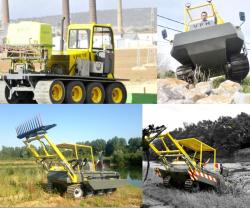



















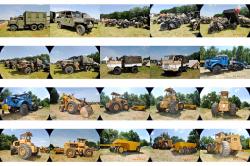
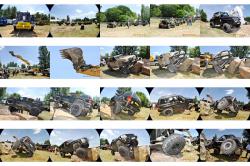

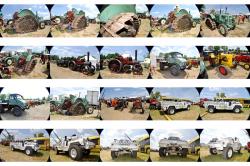
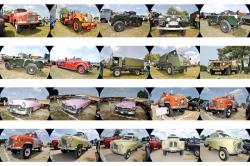
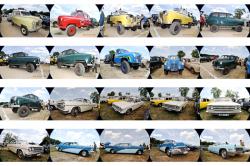




 Français
Français
 English
English
 Español
Español
 Italiano
Italiano
 Deutsch
Deutsch
 Nederlands
Nederlands
 Portuguesa
Portuguesa